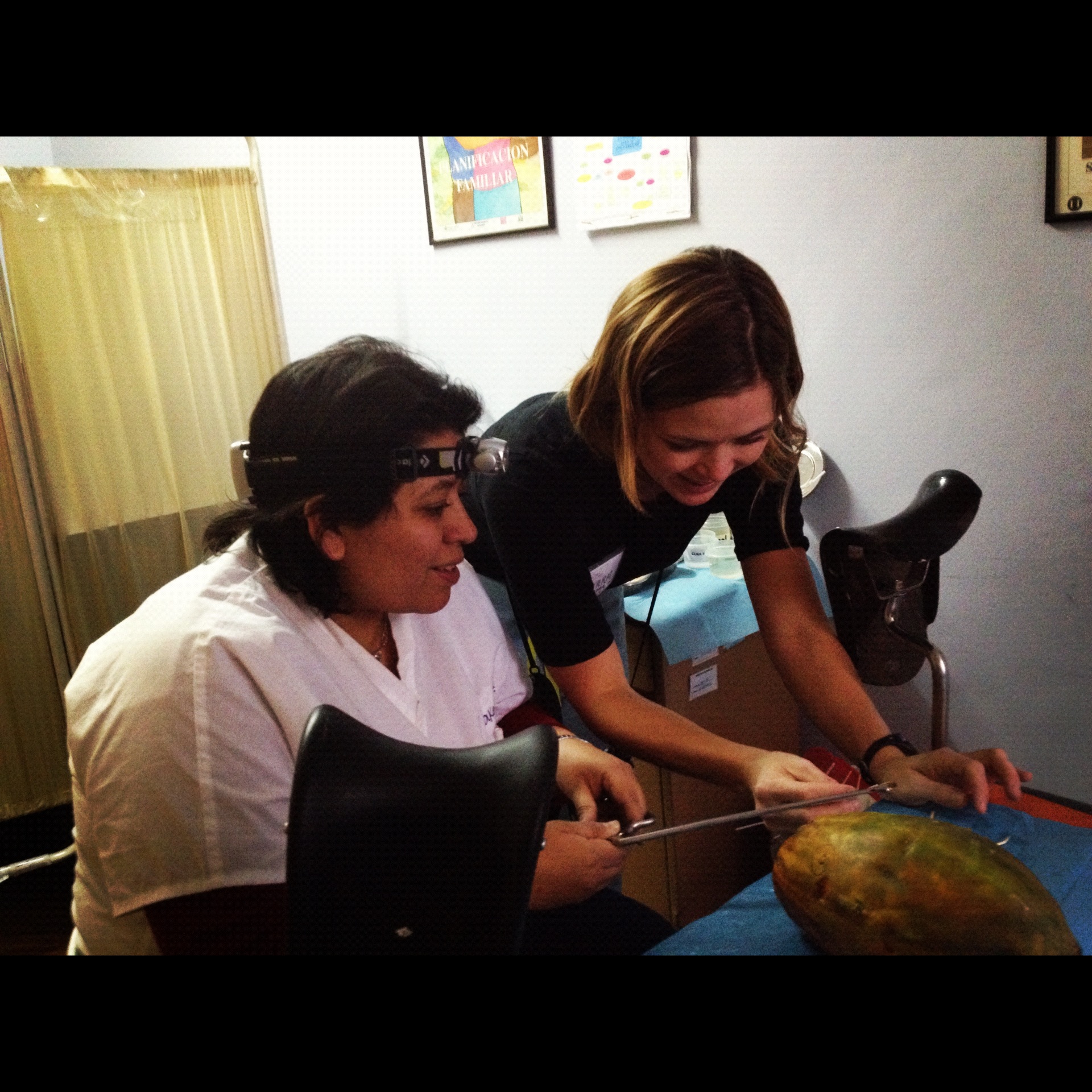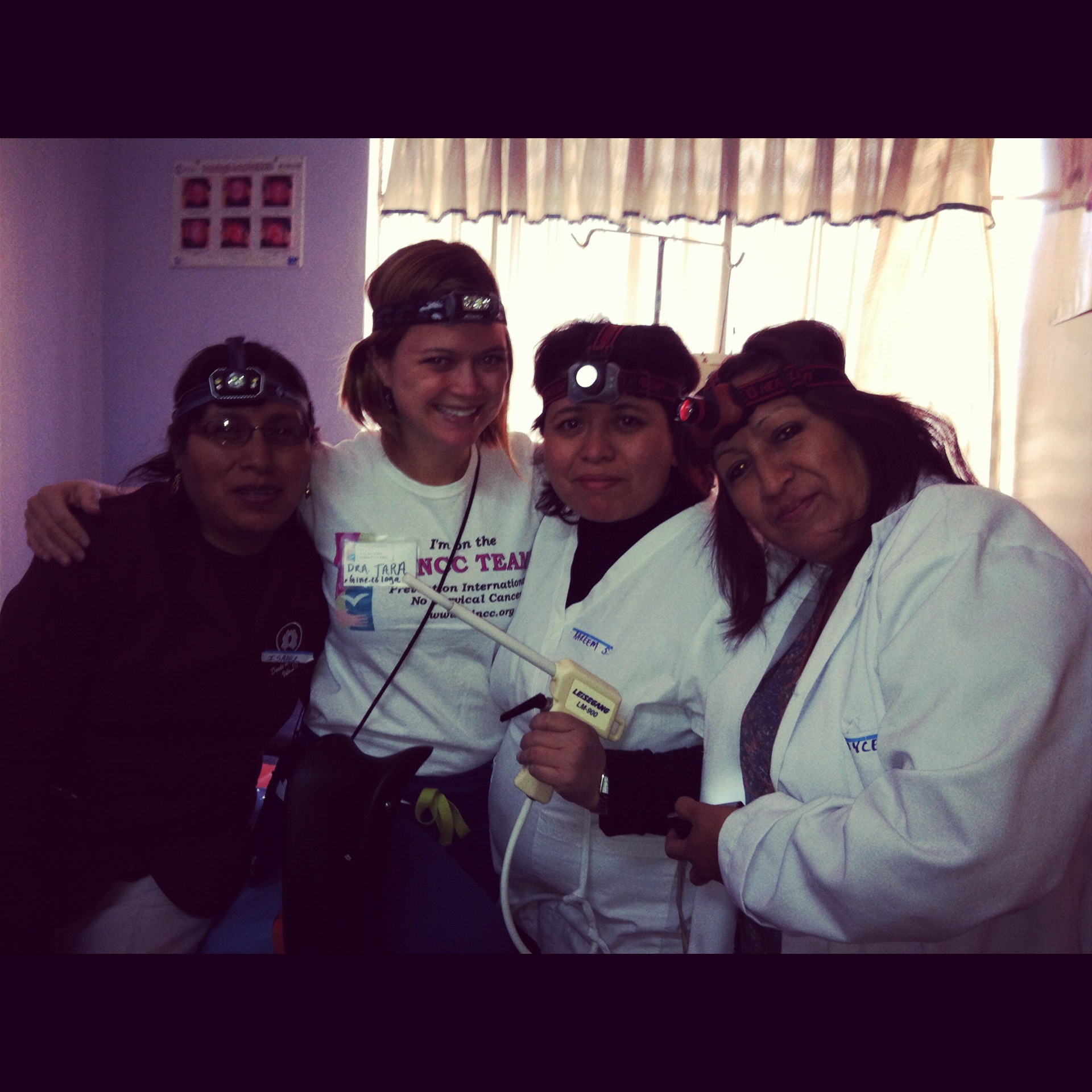Written by Laura Abbott, MD (a third year Obstetrics & Gynecology Resident at Kaiser Permanente, San Francisco…
PINCC: El Salvador and Peru
Posted by Tara Hulbert, MD (a fourth year OBGYN resident from Kaiser Permanente, Oakland while on a global health elective in San Salvador, El Salvador and Puno, Peru with Prevention International: No Cervical Cancer PINCC).
International healthcare carries many ethical challenges. Seven guiding principles have been developed to address these challenges: mission, collaboration, education, service, teamwork, sustainability, and evaluation.
During my recent strip to El Salvador and Peru, I experienced the truly sustainable nature of Prevention International No Cervical Cancer (PINCC) and how this organization follows the seven guiding principles of international healthcare. The mission of PINCC is to create sustainable programs that prevent cervical cancer by educating women, training medical personnel, equipping facilities in developing countries, utilizing proven, low cost, accessible technology methods.
What makes PINCC strong is their collaboration with each individual country’s ministry of health to establish a long-term collaboration. This allows the healthcare professionals we train to be available for the weeks when PINCC comes.
My first week in San Salvador was spent working with healthcare professionals who had been trained by PINCC during several trips over the last 5 years. The goal of our education program during this visit was to help the already trained healthcare providers to teach other providers, the “trainees”, in the World Health Organization’s “See and Treat Method” of cervical cancer screening. This is esentially a naked eye colposcopy where any lesions seen can be treated or followed up in the same visit. In low resource settings when patients often have considerable challenges in getting to a clinic, this method can significantly reduce a women’s risk of getting cervical cancer with only one clinic visit.
Our group spent one day rehearsing how we would train the “trainers” with challenging clinical scenarios. As a resident, I am an active trainer and trainee, which contributes to my understanding of the importance of adequate teaching. We observed approximately 20 “trainers” throughout the week assessing their ability to teach the trainees. We gently guided them to ask their trainees clinical questions rather than give up the answer, have patience while the trainee struggled through the procedure, and knowing when to take over when it was clinically appropriate for the patient’s comfort or safety.
We had a great week and the ministry of health put on a ceremony at the end of the program. We certified five trainers and felt that the group was strong enough to continue the training process on their own, thus completing PINCC’s mission in El Salvador. The plan is to continue checking in every 3-6 months with decision for another visit dependent on their progress and maintenence of the program.
PINCC’s program director and I then headed off to the mountains of Peru where we would meet another group of volunteers. At an altidude of 12,000 feet, I immediately felt short of breath and palpitations as my body acclimated. After arrival, we met with the new group of volunteers and were greeted by our hosts. This was PINCC’s initial visit to Puno so we all braced ourselves for a challenging week. The first day we were greeted by over 40 excited students invested in women’s health and anxious to start the process of reducing cervical cancer in the area. The students were nurse midwives along with a few doctors from the surrounding areas. We spent the first few hours going through the basics of cervical anatomy, the progression of cervical dysplasia, and the evidence behind and purpose of VIA (Visual Inspection with Acetic Acid). The challenges of the week included altitude adjustment which was impossibleto ignore, figuring out a way to teach a large amount of students in an effective manner, and recruiting patients to screen! Our hosts in Puno did a great job with advertisement and by the end of the week, we had over 100 patients waiting outside the door to be screened. At this point, we had found an efficient way to make sure all of our students learned what they needed to start the process of getting certified to perform VIA on their own. We didn’t certify anyone that first week, but we developed the structure needed to come back later and continue the training. Our students inspired us with their tenacity and eagerness to learn. It was clear they were truly dedicated to their community and patients. This kept us motivated during the long work week and PINCC is very excited to start a longstanding program with the community.
Our week was full of great Peruvian food and friends. We ended our week with a night out with the trainees singing Karaoke and a wonderful day trip on Lake Titicaca visiting the famous islands.
My second trip with PINCC proved to be more inspiring than the first. I witnessed the full process of the training program from Puno where we met with brand new students to El Salvador where we finished the training program after PINCC visits for the last 5 years.


Hi! Would you mind if I share your blog with
my facebook group? There’s a lot of folks that I think would really appreciate your content. Please let me know. Thanks